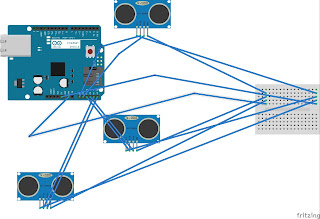ARDUINO SKETCH FOR FIRE SENSOR
////USE THIS CODE FOR FIRE SENSOR FOR BETTER RESULTS...... int val ;// define numeric variables val float sensor; //read analoog value void flamesensor() { int sensorReading = analogRead(A5); // map the sensor range (four options): // ex: 'long int map(long int, long int, long int, long int, long int)' int range = map(sensorReading, sensorMin, sensorMax, 0, 3); // range value: switch (range) { case 0: // A fire closer than 1.5 feet away. Serial.println("** Close Fire **"); Serial.println(sensorReading); break; case 1: // A fire between 1-3 feet away. Serial.println("** Distant Fire **"); Serial.println(sensorReading); break; case 2: // No fire detected. Serial.println("No Fire"); Serial.println(sensorReading); break; } delay(5000); // delay between reads }



